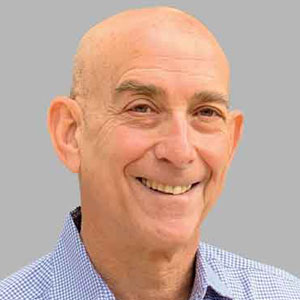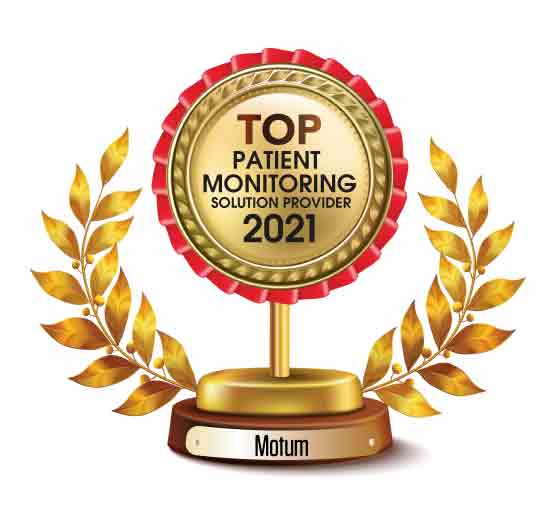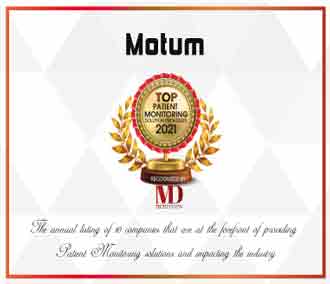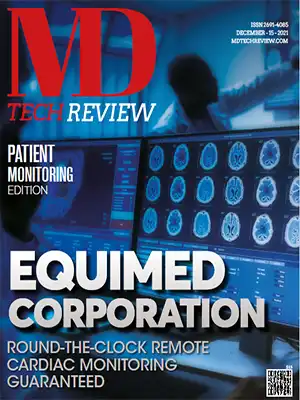 Lewis Brown, CEO
Lewis Brown, CEO“Our core objective is fall prevention, rather than after-thefact detection,” shares Lewis Brown, CEO of Motum. "Our platform provides safer walking assistance and data insights that allow for proactive interventions before the fall occurs, whenever it sees that health and wellness have changed, or may be at risk." While most fall-prevention strategies for seniors focus on exercise and sensory upkeep, Motum is the first platform to directly address mobility challenges. "Gait quality is a sensitive indicator of changes in health, and an accurate predictor of future care needs," adds Ron Goldberg, Founder and Chief Product Officer of Motum. "Our technology quantifies mobility health and fall risk, while providing physical assistance and digital coaching to help seniors maintain healthy mobility, so they can stay independent longer."
In an interview with the editorial team of MD Tech Review, Goldberg and Brown discussed how their innovative products and services enhance independence, security, confidence, and quality of life for seniors and provide unique data insights for care teams.
What are the factors that led to the inception of Motum?
Goldberg: Despite our many advances in health technology, we've had no innovations to cope with mobility challenges and fall risk, which are extremely common in seniors. Both of my parents experienced mobility loss in their later years, and I was shocked at how primitive and dangerous their canes were. At least one fall could be traced there. As with many seniors, the mobility aid made them fearful of walking, so they became less mobile, which intensified their health issues. Although I come from an IoT background, I knew that software alone couldn't solve this problem and became convinced it was time to move beyond the cane. Work with specialists in biomechanics, kinematics and orthopedics resulted in a new type of walking aid designed to actively assist the user and mitigate the common fall hazards that are inherent to conventional mobility aids. The invention received positive press in one of the science magazines and came to the attention of the UCLA Wireless Health Institute. They had developed a "gait mapping" technology for smart mobility aids and thought our device would be a perfect carrier. This partnership led to the formation of Motum.
Virtually all patient monitoring systems for independent aging are reactive in nature. They signal trouble only after an accident has already happened. Our system shifts the paradigm to daily prevention and intelligent prediction
Brown: One of today's most pressing challenges, especially in senior care, is expanding the relatively shallow pool of meaningful data. Next steps have to take us beyond the vital signs that wearables track. We need to monitor and understand other important biomarkers that are also key to health and wellness. The clinical value of gait analysis is well established, we just haven't had practical technologies to collect it continuously or remotely. Motum is focused on gait as a biomarker, especially among the mobility challenged, who total nearly 25 percent of the U.S. senior population.
Goldberg: We need a broader world of monitoring devices, a wristband simply can't do everything. Mobility is a plausible vital sign in older adults. Age-related changes in physical and mental health often reveal themselves through subtle changes in gait, including speeds, rhythms, and patterns. These drifts are undetectable to the eye, but they're measurable and a powerful predictor of negative health outcomes, especially falls. Every 20 minutes, an older adult dies from a fall. The annual cost of senior falls tops $50 billion in direct healthcare spending. We can no longer afford to keep this critical biomarker hidden.
Could you shed light on the proactive solutions you offer, their methodology, features, and benefits?
Brown: The preventive aspect begins even before any data is collected. The user simply walks, using a new type of mobility aid with a regulated, self-propulsive movement. This produces optimal ground contact and reduces physical and cognitive demands, both of which are surprisingly high in canes and walkers. As soon as the device begins motion, the system wakes and starts tracking.
A multi-sensor array captures more than a dozen precision motion and force metrics. These are sent through the cloud to our machine-learning "Insight Engine," which calculates gait analytics, including walk speed, postural sway, step integrity, and stride length, along with adjacent data for walk activity, distances, durations, irregularities, and other important information. All of the data is time-stamped to produce meaningful trend lines. This allows us to clearly see changes in trends and trajectories and act upon them, if necessary.
Goldberg: Our system produces a qualitative score through the "Motum Mobility Index," the first such index meant specifically for the mobility challenged. The score is built on multiple layers of machine-learning macro- and micro assessments, including fall risk, balance integrity, recovery progress, and more. Professional and family caregivers receive alerts when there are enough deviations or infractions to be concerning. This provides opportunities for proactive interventions. Many falls could be prevented if we saw them coming in advance. Virtually all patient monitoring systems for independent aging are reactive in nature. They signal trouble only after an accident has already happened. Our system shifts the paradigm to daily prevention and intelligent prediction.
What, according to you, steers you ahead of the market competition?
Goldberg: We are introducing "walkables" to the healthcare landscape; no other system like ours exists. Our IP includes multiple U.S. patents for biomechanical and kinematic innovation, and we hold an exclusive license to the U.S. apparatus and method patent for smart mobility aids, developed at UCLA. Our team is made up of veterans from the smart home industry, with deep experience in security, automation, informatics, and PERS. We have first-mover advantage and will strive to maintain leadership in this space.
What does the future look like for Motum?
Brown: At present, we're raising additional funds to launch our product next year. We plan on adding new services and hardware. Our platform can scale to include data trackers for medication, sleep, diet, sensory loss, and other variables in our analytics, along with mobility. We will pursue interoperability and partnerships with makers that are specialized in these areas. Because mobility tends to decline in stages over time, we will also develop new types of smart mobility aids that offer progressively greater assistance to keep seniors mobile and independent longer while providing stronger insights to the health professionals and family members that care for them.
Goldberg: We're planting the flag now for mobility health as a biomarker that needs to be tracked and measured. We believe remote patient monitoring will be an expected component of healthcare from now on, particularly as the Baby Boomers continue to turn senior. We're excited to be at the forefront of this next wave of solutions for independent aging.





